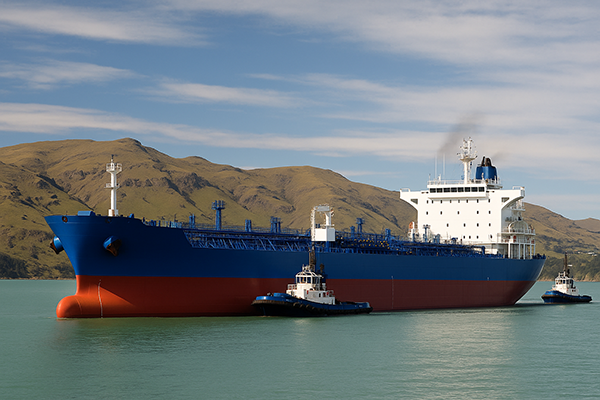Cargo Ship Costs: What You Need to Know
Cargo ships are the backbone of global trade, and their construction costs are more varied—and often lower—than many people expect. Depending on size and purpose, a brand-new cargo vessel might cost a few million dollars for a small general cargo ship, while the world’s largest container ships can reach $145 million or more. Specialized ships, like LNG carriers, push prices even higher. For those exploring the second-hand market, large used cargo ships are available in the $15–35 million range.

The Essential Role and Variety of Cargo Ships
The world’s shipyards are constantly launching new vessels to ensure trade keeps moving. However, the price you’ll pay depends heavily on the type of ship. Bulk carriers, container ships, and tankers each come with distinct construction needs, leading to wide price differences.
Typical Costs by Ship Type
Below is a table showing average newbuild prices for various ship types in 2007, adjusted for inflation to November 2022:
| Ship Type | 2007 Price | 2022 Price* |
|---|---|---|
| Dry Bulk | $32 million | $49.6 million |
| General Cargo | $11 million | $17 million |
| Container Ship | $44 million | $68.2 million |
| Crude Oil Tanker | $65 million | $100.7 million |
2007 average ship prices, *adjusted for inflation up to 2022
Ship sizes have also increased since 2007, driving prices up beyond simple inflation. Other contributing factors include rising material costs, fewer shipyards (increasing competition), and shifting market demand.
Container Ship Costs
Larger ships have become the norm as shipping companies seek to maximize efficiency and profit. In 2021, Evergreen Marine ordered 20 new container ships from Samsung in South Korea—each able to carry 15,000 containers, at an estimated $115–130 million per ship. These vessels are loaded with advanced technology and fuel-saving features, which pushes prices to the higher end of the spectrum.
Why Are Bulk Carriers Cheaper?
Bulk carriers, due to their simpler designs, cost significantly less to build. The largest bulk carriers from Chinese shipyards are about $60 million, nearly half the price of similarly sized container ships. Bulk carriers require less steel, fewer technical systems, and need smaller crews, all of which contribute to lower costs.
However, bulk carrier prices are also highly sensitive to market demand. When the bulk trade boomed in the early 2010s, newbuild prices surged. But after the Chinese construction boom ended in 2015, demand—and prices—plummeted. Since then, bulk carriers have regained popularity, leading global ship order statistics.
Tankers: Built for Safety, Priced for Complexity
Tankers, especially Very Large Crude Carriers (VLCCs), cost more due to stricter safety regulations. A new VLCC (200,000–320,000 dwt) is about $95 million, according to Lloyd's List. Since the Exxon Valdez disaster, tankers are required to have double hulls, adding significant material and labor costs. Specialized tankers, such as LNG carriers, can cost up to $190 million.
Why Are Cruise Ships So Expensive?
Cruise ships are in a league of their own when it comes to construction costs. Royal Caribbean’s Oasis of the Seas was built for $1.4 billion in 2008. Even the smallest modern cruise ships cost at least $500 million. The reasons are clear: cruise ships are essentially floating hotels, with multiple decks, luxury amenities, advanced safety systems, and accommodations for thousands of passengers. All these features drive costs far beyond those of cargo ships.
Second-Hand Ships: A Viable Alternative
Buying a used ship is a common and cost-effective strategy. Like used cars, second-hand ships are cheaper, though they may need refurbishments. Shipping companies frequently trade vessels, and entire fleets can be operated using second-hand tonnage. While the purchase price is lower, buyers must factor in repairs, regulatory surveys, repainting, and possibly reflagging the vessel.
Here are some recent second-hand ship sales:
| Ship Name | Ship Type | Year Built | Size | Price |
|---|---|---|---|---|
| Step Forward | General Cargo | 1995 | 117,000 dwt | $3.5 million |
| Super Emerald | Crude Oil Tanker | 2005 | 51,000 dwt | $17 million |
| A Bote | Container | 2007 | 907 TEU | $22 million |
| U Glory | Bulk Carrier | 1998 | 46,570 dwt | $8.75 million |
Some examples of second-hand ship prices from Nautisnp
Second-hand ship prices generally track newbuild costs—when new ships get more expensive, so do used ones. Buyers also incur hidden costs: mandatory surveys, upgrades, crew retraining, repainting, and administrative changes.
Are Ship Prices Rising or Falling?
It’s tough to put an exact figure on ship prices, as shipyards rarely publish their rates and the market is volatile. However, both new and used ship prices have climbed rapidly in the past 18 months. For example, VLCC newbuild prices rose 35% between 2021 and 2022, from $88 million to $119 million, though still below the 2008 peak of $162.5 million. Used VLCC prices have also surged 23–31% in the last year.
What Drives Shipbuilding Costs?
Multiple factors shape ship pricing:
Equipment: 40%
Steel: 30–40% (recently rising due to global price surges)
Labor: 15%
Overheads: 10%
Profit: 5%
Shipyard selection, equipment choices, and steel quality all influence the final cost. Opting for basic equipment or lower-grade steel can cut expenses but may affect performance and longevity.
How Long Do Ships Last?
Cargo ships are typically built to last 30–50 years, provided they’re well maintained. Ships often change owners several times, with each sale often accompanied by renovations and upgrades. Though the initial price is substantial, a well-cared-for vessel can serve for decades.
In summary:
Cargo ship costs vary widely depending on type, size, and market conditions. While building a new vessel is a significant investment, buying second-hand can offer considerable savings—provided you account for necessary upgrades and compliance costs. With the global shipping market in constant flux, understanding these cost drivers is essential for anyone considering entering the industry.

